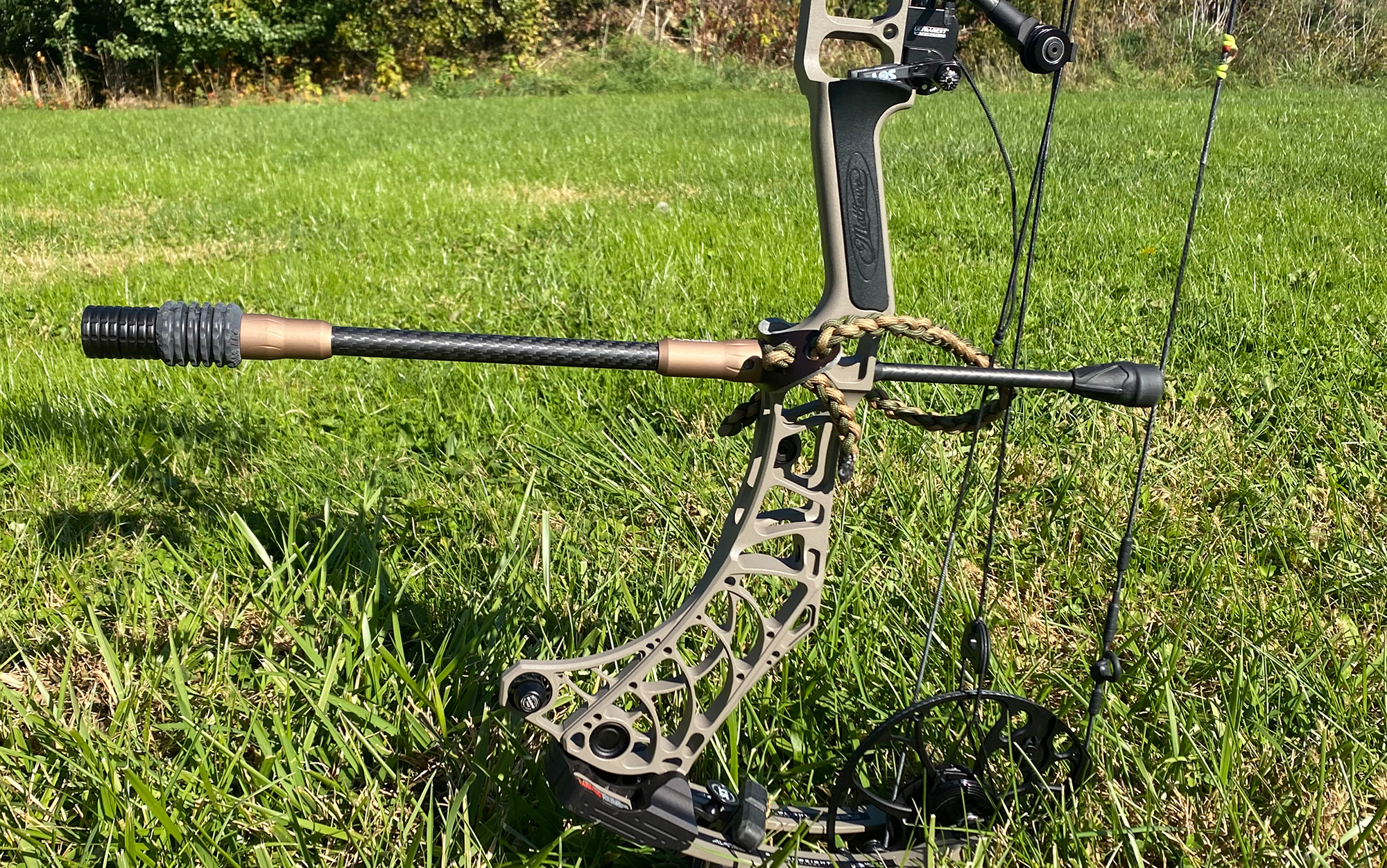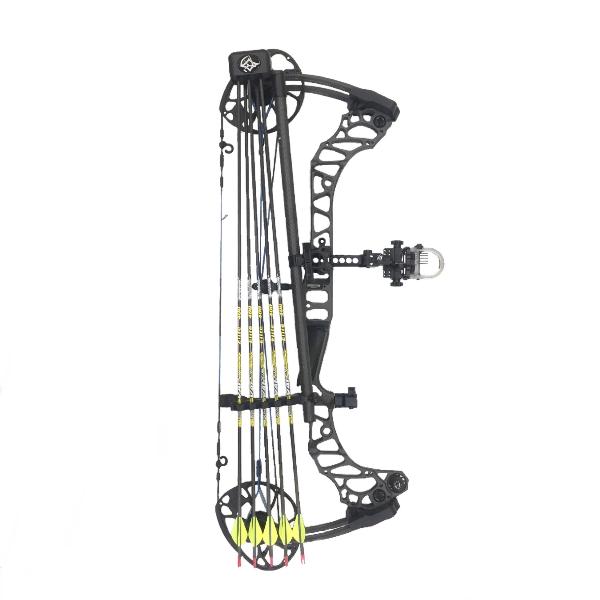Mastering Archery Stabilizers: A Full Guide for Beginners
Maximize Your Archery Efficiency With the Perfect Stabilizer: a Comprehensive Purchaser's Guide
In this detailed purchaser's guide, we will certainly explore the various kinds of stabilizers, vital aspects to consider, the significance of appropriate size and weight, selecting the ideal damping system, and maintenance suggestions. Whether you're a seasoned archer or simply starting out, this overview will help you browse the globe of stabilizers and optimize your archery performance.
Types of Stabilizers
There are 3 main kinds of stabilizers typically made use of in archery performance. These stabilizers play a critical duty in enhancing accuracy and minimizing bow torque. The first kind is the lengthy rod stabilizer.
The second type of stabilizer is the side rod stabilizer. Side pole stabilizers are connected to the side of the bow and assistance counterbalance any kind of side movements.
The 3rd sort of stabilizer is the V-bar stabilizer. V-bar stabilizers are typically made use of combined with side rod stabilizers to even more boost security. They connect to the bow and the side rods, creating a triangular arrangement that disperses weight uniformly. This setup helps in reducing vibrations and oscillations, leading to a smoother and a lot more controlled shot.
Understanding the different sorts of stabilizers is vital when choosing the ideal devices to enhance archery performance. Each stabilizer kind offers a specific function, and selecting the ideal combination can considerably boost accuracy and uniformity on the variety or in the area.
Key Factors to Take Into Consideration

Primarily, it is necessary to think about the size and weight of the stabilizer. Longer stabilizers give enhanced security and equilibrium, while shorter ones use more ability to move. The weight of the stabilizer affects the general equilibrium of the bow, and it is vital to locate a stabilizer that complements the weight of your bow.
An additional critical aspect to consider is the product of the stabilizer. Stabilizers are typically made from light weight aluminum, carbon, or a combination of both. Light weight aluminum stabilizers are sturdy and supply excellent resonance moistening, while carbon stabilizers are light-weight and deal superior vibration absorption.
Furthermore, it is essential to assess the layout and adjustability of the stabilizer. Some stabilizers include flexible weights and dampeners, enabling you to customize the equilibrium and resonance control. In addition, taking into consideration the placing alternatives and compatibility with your bow is essential to guarantee a secure and correct fit.
Lastly, budget plan is a significant variable to take into consideration. Stabilizers can be found in a series of costs, and it is important to locate one that fits within your spending plan while still satisfying your efficiency needs.
Importance of Proper Size and Weight

Correct length and weight are important aspects that significantly influence the performance of an archery stabilizer. It is essential to take into consideration the shooting design, target range, and individual preference when selecting the length of a stabilizer.
Likewise, the weight of the stabilizer plays an important duty in attaining ideal efficiency. A larger stabilizer takes in much more vibration and minimizes bow motion during the shot, resulting in a steadier goal and tighter groups.
In addition, the his comment is here length and weight of the stabilizer need to be compatible with the archer's physical strength and capturing technique. By picking the right length and weight, archers can enhance their security, decrease bow torque, improve precision, and improve general efficiency. It is suggested to consult with seasoned archers or professionals to make sure the best match between the stabilizer and individual capturing demands.
Picking the Right Damping System
The choice of an appropriate damping system is crucial in maximizing the efficiency of an archery stabilizer. A damping system is made to reduce the vibrations and sound produced when an arrowhead is released, supplying the archer with a more exact and secure shot. When picking the best damping system for your stabilizer., there are a number of elements to consider.
First of all, it is necessary to think about the kind of material used in the damping system. Rubber and rubber-like materials are frequently made use of because of their ability to absorb vibration successfully. These products are also long lasting and light-weight, making them perfect for archery stabilizers.
Second of all, the style of the damping system needs to be thought about (archery stabilizer). Look for a system that supplies multiple get in touch with factors with the stabilizer, as this will certainly disperse the resonances a lot more uniformly and additionally boost the stabilizer's performance
In addition, consider the adjustability of the damping system. Being able to make improvements the level of damping can be advantageous, as different archers may have varying preferences and shooting styles.
Lastly, it is very important to make sure that the chosen damping system works with your stabilizer. Inspect the measurements and specs to guarantee a correct fit.
Maintenance and Treatment Tips
To guarantee optimal efficiency and durability of your archery stabilizer, it is necessary to execute proper upkeep and care techniques. Routine upkeep not only avoids wear and tear but likewise assists determine any navigate to these guys potential issues before they become major problems. Among the initial steps in preserving your stabilizer is to cleanse it consistently. Make use of a soft fabric or brush to eliminate dust, dust, and particles from the stabilizer and its components. Pay special interest to the weight system, as dirt can gather in the threads and impact its performance. Furthermore, inspect all the parts of the stabilizer for any type of indications of damage or wear, such as fractures or loosened screws. It is essential to address them without delay to avoid more damage if any concerns are spotted. Lubing the relocating components of try this out the stabilizer, such as the dampers and weight system, is also vital to make sure smooth operation. Make use of a top notch lube advised by the maker and adhere to the instructions given. Finally, store your stabilizer in a great, completely dry area away from direct sunshine and extreme temperatures to avoid bending or various other damage. By following these upkeep and treatment pointers, you can maximize the efficiency and longevity of your archery stabilizer.
Final Thought
Finally, selecting the right stabilizer for archery is critical for optimizing efficiency. By thinking about factors such as stabilizer type, length, weight, and damping system, archers can boost their precision and security. Furthermore, proper upkeep and treatment of the stabilizer is vital for its long life and ideal performance. With the appropriate stabilizer and proper interest to these aspects, archers can improve their general archery experience.
The 2nd type of stabilizer is the side rod stabilizer.The 3rd kind of stabilizer is the V-bar stabilizer. V-bar stabilizers are generally utilized in conjunction with side rod stabilizers to additionally improve stability. The weight of the stabilizer influences the general equilibrium of the bow, and it is crucial to locate a stabilizer that complements the weight of your bow.
Aluminum stabilizers are sturdy and offer excellent vibration wetting, while carbon stabilizers are lightweight and deal premium vibration absorption.